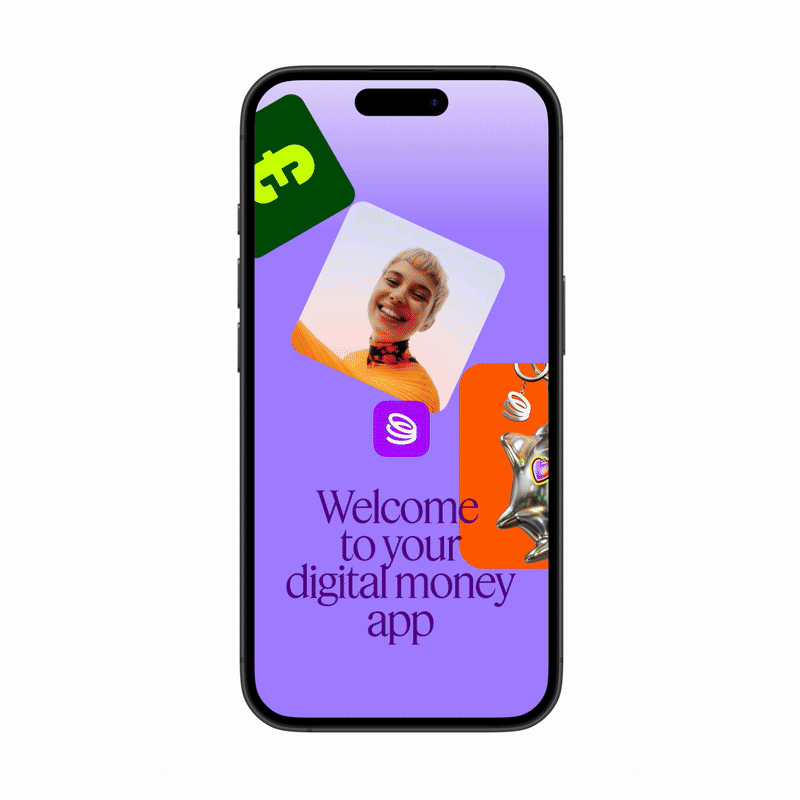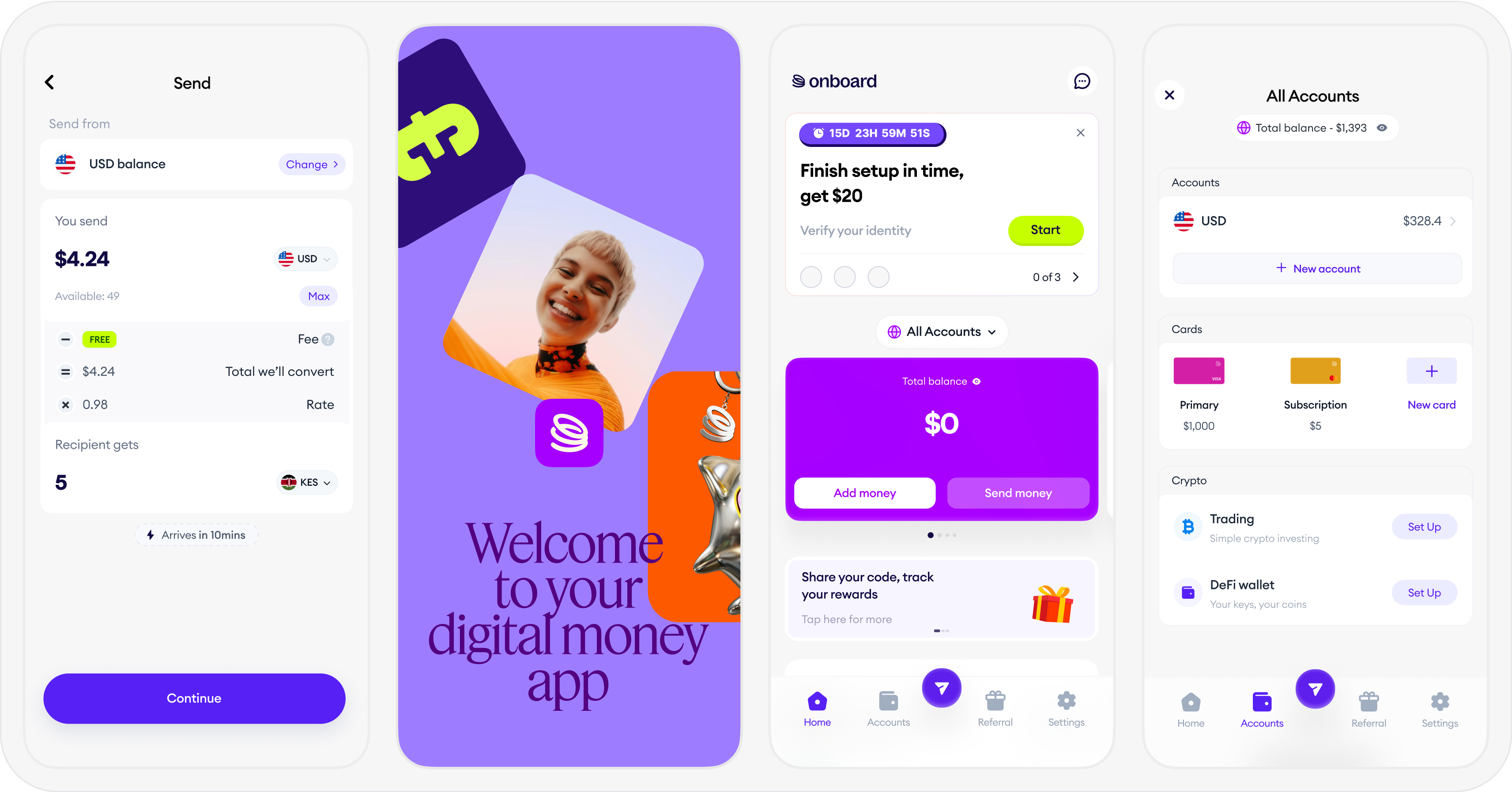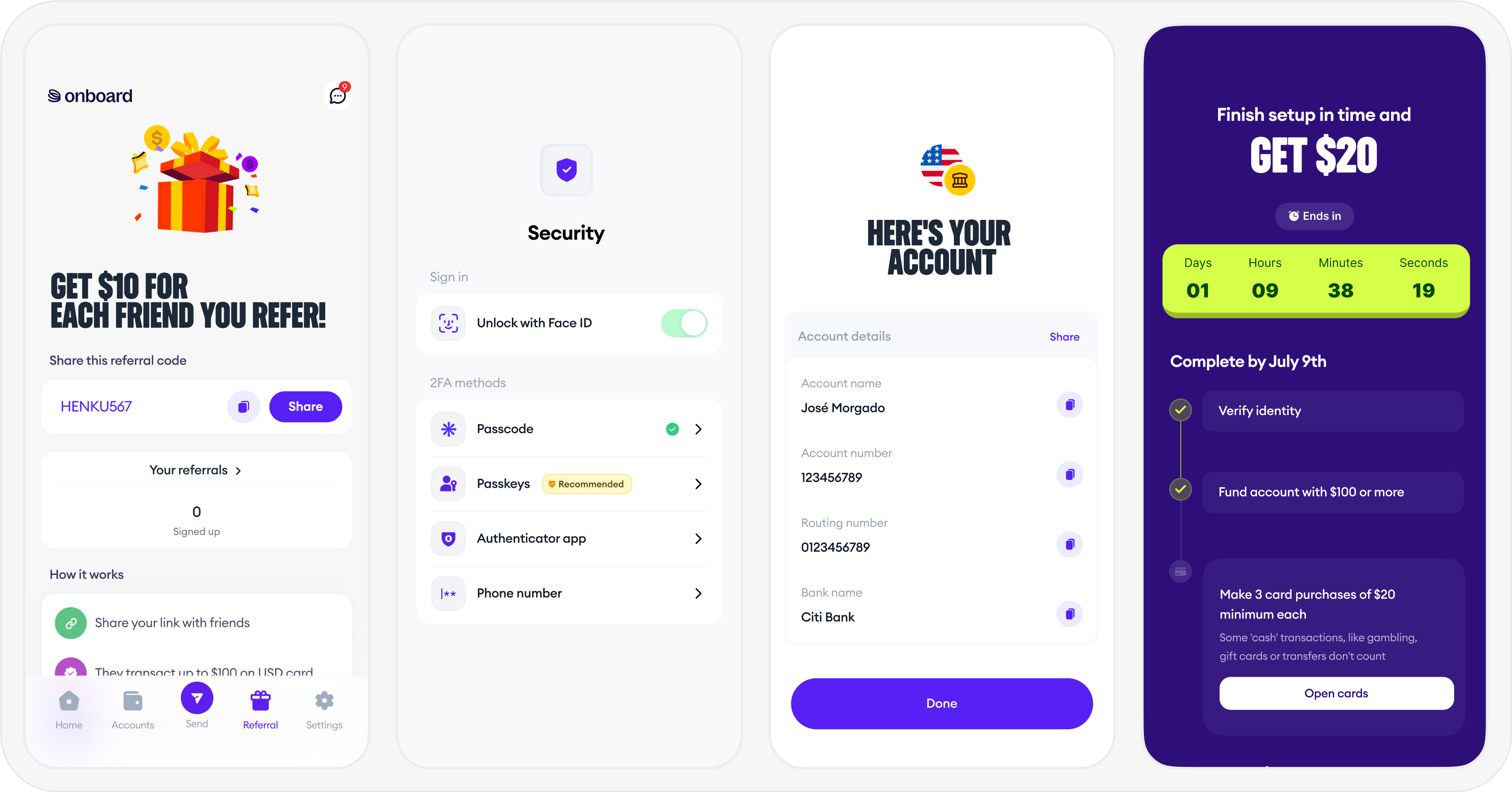On rearchitecting Onboard : From crypto wallet to a global money app
In the summer of 2025, after months of sweat, we launched Onboard V3, an all-in-one app for sending, receiving, and spending stablecoins and global currencies.
Now live in 10+ countries, V3 is already outperforming previous versions, especially across monetisation and retention.
This release reflects a major shift in direction. We went from just a crypto wallet to a digital money app, merging four powerful tools—USD banking, crypto wallet, virtual card, and cross-border payments— into one unifed and seamless experience.
Our claim to fame is "To build the last finance app you’ll ever need"
And with V3, we just delivered on the first step.

Due to non-disclosure policies, I have omitted and obfuscated company confidential information in this case study
The backstory
Why we launched V3
Onboard started as a crypto wallet for DeFi-native users. It offered payments powered by stablecoins and was gaining utility in emerging markets. But for everyday users, especially those unfamilar with crypto, it felt fragmented, technical, and overwhelming.
After multiple cycles of learning from user feedback and data, it became clear: We needed to reimagine Onboard not as a DeFi-first tool, but as a simple, reliable digital money app for everyone.


The challenge
How might we transform a DeFi-heavy wallet into a unified experience for everyday finance, without losing the power of crypto?
- V0 to V2 was onchain-first, complex, and required crypto fluency
- The average user churned fast after signing up
- Core actions (like sending money) were unintuitive and inconsistent
- Crypto-curious users wanted the benefits of stablecoins but not the learning curve
My role
What I did
As Lead Product Designer, I drove the redesign across product architecture, interface, and experience.
- Led a 1-week design sprint to reimagine the core experience from first principles
- Collaborated with product, engineering, and compliance to design and unify 5 complex financial tools (USD banking, crypto, card, cross-border payments, and savings) into one cohesive platform
- Ran prototype testing alongside development to surface early friction and inform decisions
- Made design decisions that balanced user needs with business goals around retention and monetization

The approach
User-first, tech-abstracted design
Instead of surfacing blockchain concepts, I designed for clear mental models, money in, money out, save, spend, abstracting the complexity behind familiar flows.
Unified product architecture
Merged four powerful but disjointed tools, USD account, stablecoin wallet, virtual card and cross-border payments into one seamless experience.
Cohesion, speed, and confidence
Redesigned the core send flows to feel fast and trustworthy, with thoughtful interactions around confirmation, errors, and fallback states.
Prototype tests during dev
While engineers shipped backend foundations, I ran moderated usability tests on high-fidelity prototypes to:
- Validate new concepts
- Identify friction early
- Predict and reduce backlash from existing users

What worked
- When the launch, new users adopted the product faster. Utilization soared.
- We saw a measurable lift in retention and monetization across core features
- The new send flow dramatically reduced time to value
What didn’t work (At first)
Our power users weren’t happy and they let us know.
- Simplifying to one unified send flow disrupted habits for our crypto-native users, who relied on the control offered by legacy transfer rails like Direct accounts.
- To them, it felt like we were stripping away power in favor of ease.
- Others were frustrated by the poor discoverability of those legacy tools, which we had intentionally buried deeper in the app to support a cleaner, unified default.
In summary, what improved usability for most felt like a loss of control to a few. We expected the tension, it signaled we were challenging long-held mental models.
Case study still in progress - Do come back when you can ❤️ Credits: Henry - Product , Taiwo+Johnson+Nkwachi+Eno+Nomami - Engineering , Data - Tobi, Joy - Illustrations